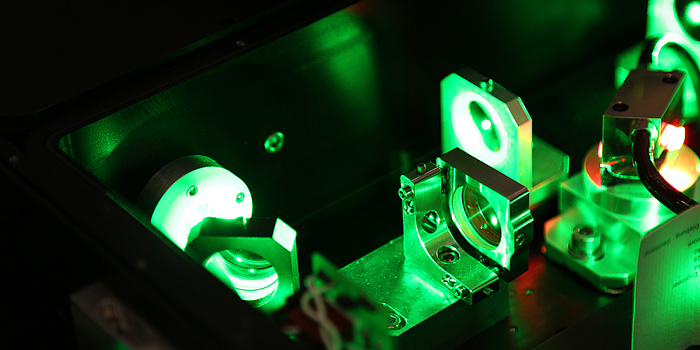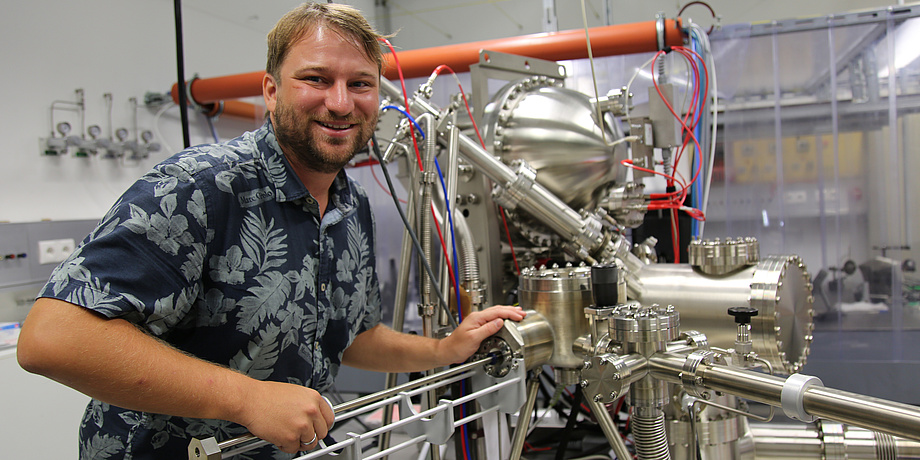"What I'm doing now is exactly what I've always wanted to do." Florian Lackner has achieved what many wish for. Even as a child, the experimental physicist dreamed of becoming a scientist. And now he is – with a laser laboratory he built himself in Petersgasse in Graz. "When I was a little boy, I used to read non-fiction and do a lot of building with Lego. Today I do the same thing, but my building blocks are now made of stainless steel." The experimental physicist is now "playing" with these building blocks in the laser laboratory he built himself in Graz's Petersgasse and is working on plasmonic nanoparticles.
Plasmonic Nanoparticles
"I've always been fascinated by exploring something that no one before me has ever explored," the 35-year-old sums up. In his case it's plasmonic nanoparticles. What makes it special is that they interact with light in a special way and can, for example, amplify it extremely and concentrate it on a point that is smaller than the wavelength of light.
Alkali metals are a basic material of which such particles can consist. But they are highly reactive in air and therefore difficult to explore. "Alkali metals are used, for example, in fireworks – they explode in air in all kinds of colours." To avoid firework displays in the laboratory, the scientist tries to "wrap" them in a kind of protective cover: a drop of helium in a high vacuum "shoots" through vaporized alkali and gold atoms. In this way the non-reactive gold envelops the highly reactive alkali metal. Researchers can study the explosive material thanks to this "golden protective cover". "We then look in particular at the interaction of the material with electromagnetic radiation – for example light," explains Lackner. "We want to find out in which part of the electromagnetic spectrum the individual particles absorb light particularly well." Among other methods, the researchers mostly use laser spectroscopy for this purpose.

Using a laser, the scientist investigates the properties of materials he has designed himself.
His own Laser Laboratory
After completing his studies at Graz University of Technology, Florian Lackner spent two years as a postdoctoral fellow in the USA, financed by a Schrödinger scholarship. After Lackner's return to Graz, the Institute of Experimental Physics received financial support for a photoemission electron microscope – a facility around which the young researcher has built a laser laboratory in recent years. "The device is very versatile. As with any other type of electron microscope, we can look at very small structures. Unlike conventional electron microscopes, however, we do not use an electron beam, but electromagnetic radiation," explains Lackner. “And we use this to examine the surfaces of various materials. But we can also use it to analyse nanoparticles and nanostructures." The physicist is currently working on coupling the microscope with a femtosecond laser in order to be able to take a closer look at processes in materials. "I want to see how plasmonic materials absorb light." This knowledge could subsequently lead to new, even more efficient materials for solar cells.
With one Picture everything was clear
The fire for materials science was ignited by the researcher at the age of 18 with a very special image: "During a visit to TU Graz I was shown a STM image of atomically dissolved carbon. You could see each individual atom. This fascinated me so much that I knew this is what I wanted to do," explains Lackner, who turns to his laser system and does exactly what he always wanted to do: examine atomically dissolved materials.
This research area is anchored in the Field of Expertise “Advanced Materials Science”, one of five strategic foci of TU Graz.
Subscribe to TU Graz research monthly for more research related news.

